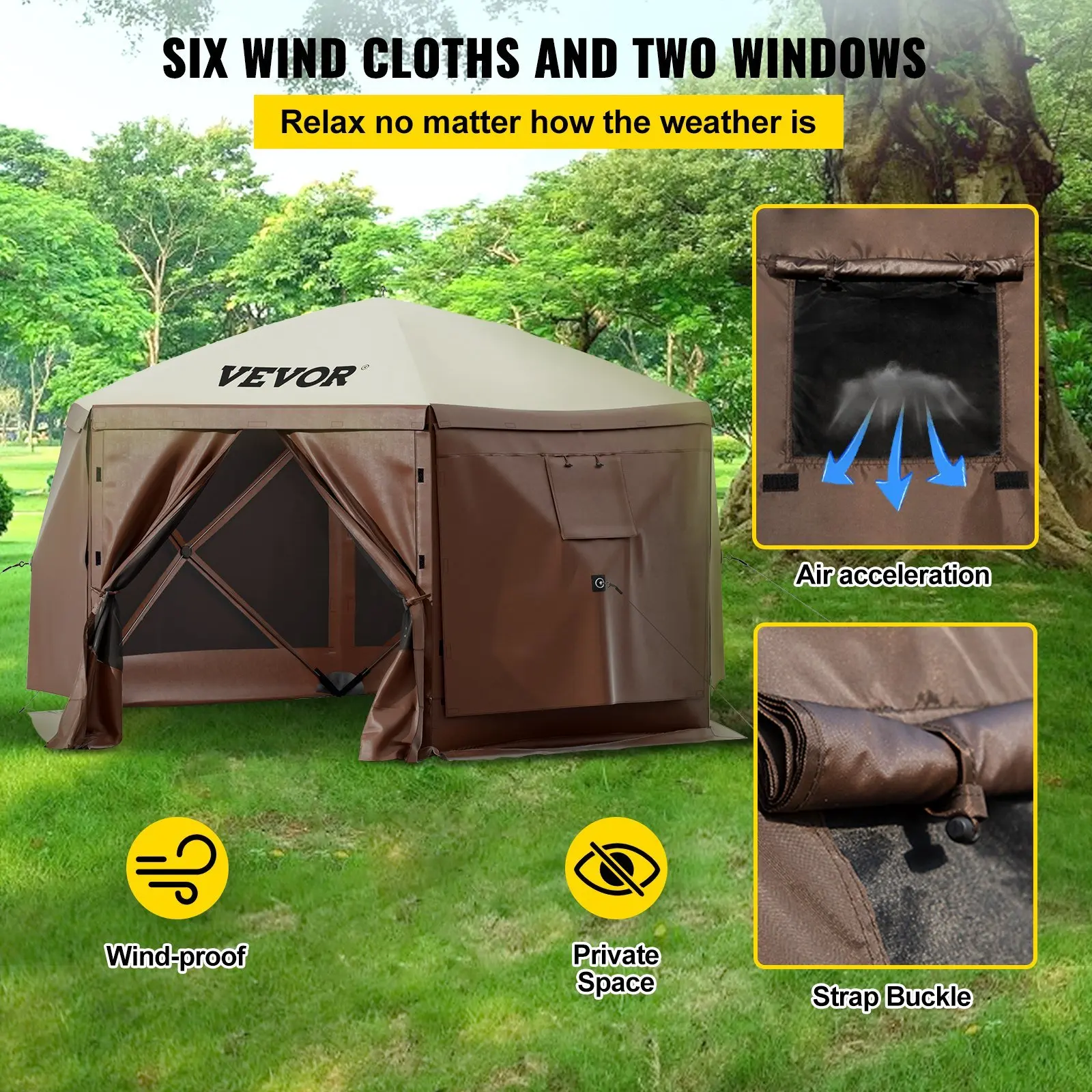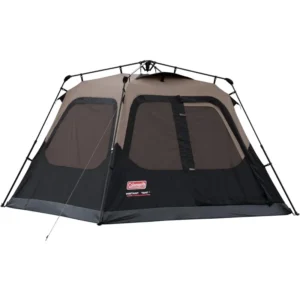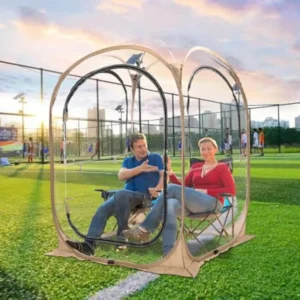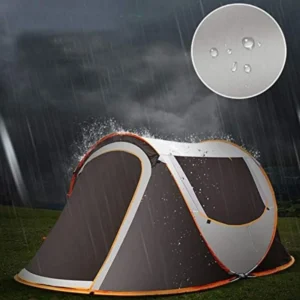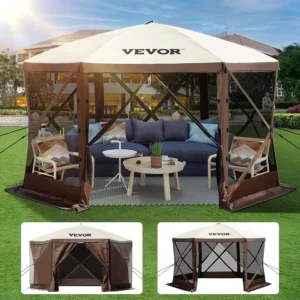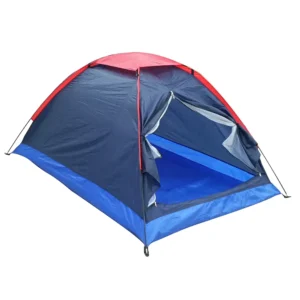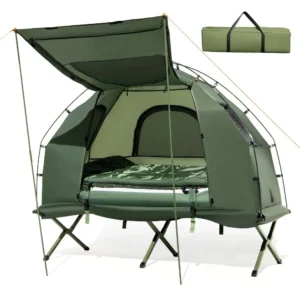Understanding the “Instant” in Instant Tents
When you’re planning a camping trip with your partner, setup time can make or break your experience. This is where instant tents shine. Unlike traditional tents that require threading poles through sleeves and figuring out complex assemblies, instant tents feature pre-assembled frameworks that allow setup in just minutes—sometimes even seconds.
The magic behind instant tents lies in their innovative design. These shelters use pre-attached pole structures that remain permanently connected to the tent fabric. When you’re ready to set up, the entire framework unfolds and extends into position with minimal effort.
There are three primary mechanisms that make instant tents work:
- Pre-attached telescoping poles: These poles extend and lock into place like a telescope or antenna, requiring you to simply pull them out and secure them.
- Central hub systems: A central connecting point where multiple poles meet, allowing the entire structure to expand outward at once.
- Spring-loaded frames: These use tension and springs to automatically “pop” the tent into shape when released from their packed position.
The time difference is remarkable—while traditional tents typically take 10-15 minutes to pitch, even for experienced campers, instant tents can be fully erected in just 60-120 seconds. This innovation has revolutionized camping for couples who want to maximize their time enjoying nature rather than struggling with tent poles.
Understanding different compact shelters for two campers helps you make better decisions about which option might work best for your adventures. The technology behind these quick-pitch designs continues to improve, offering better durability alongside the convenience factor that makes them so appealing.
For couples who want to dive deeper into the mechanics, learning exactly how to pitch an instant tent can help you master the process even faster.
The 60-Second Setup: How Couples Can Pitch an Instant Tent
Setting up an instant tent is remarkably straightforward, making it perfect for couples where one person might need to handle setup while the other manages different campsite tasks. Here’s how the typical setup process works:
Unpack and position: Remove the tent from its carrying bag and place it on your desired camping spot, making sure it’s free from sharp objects or rocks.
Unfold the structure: Lay the tent flat on the ground with the bottom side down, and unfold any compressed sections.
Extend the frame: Push, pull, or lift the structure (depending on the design) until you hear the satisfying “click” of poles locking into place.
Secure the tent: Stake down the corners to prevent your new home from blowing away.
Adjust and fine-tune: Attach the rainfly if needed and adjust tension straps for optimal stability.
That’s it! The entire process typically takes 60-90 seconds for most instant tents, even if you’re setting up alone. This means if your partner is busy unpacking other gear or starting dinner, you can handle the tent setup without needing a second pair of hands.
Takedown is similarly efficient, though it often requires a bit more practice. The key is to release the locking mechanisms in the correct sequence and fold the tent along its designed creases. Many couples find it helpful to divide responsibilities—one person can collapse the structure while the other helps fold and compress it for storage.
The efficiency of instant camping tents means you’ll spend less time on setup and more time enjoying each other’s company around the campfire. And when it’s time to head home, mastering tent packing tips can make the process even smoother.
Space Optimization: Finding the Right Instant Tent Size for Two
One common mistake couples make when purchasing instant tents is selecting a size based solely on person count. A “2-person” tent is technically designed to fit two sleeping bags side by side—with virtually no extra space for gear, changing clothes, or moving around.
For couples seeking comfort, size matters considerably. Here’s a helpful comparison of typical dimensions:
| Tent Size | Floor Dimensions | Best For |
|---|---|---|
| 2-Person | 5’ × 7’ to 5’ × 8’ | Minimalist couples, limited gear |
| 3-Person | 6’ × 7’ to 7’ × 8’ | Couples with moderate gear |
| 4-Person | 7’ × 8’ to 8’ × 10’ | Couples wanting space + gear storage |
A standard queen air mattress measures approximately 5’ × 6.5’, which means it will consume nearly all the floor space in a typical 2-person tent. For a comfortable camping experience, most couples should consider at least a 3-person tent, with many preferring the luxury of a 4-person model.
Height is another crucial factor often overlooked. Many instant tents feature a cabin-style design with near-vertical walls, providing greater usable space than traditional dome tents. Look for center heights of at least 4’ if you’ll mostly be sleeping in the tent, or 6’+ if you want to be able to stand up inside.
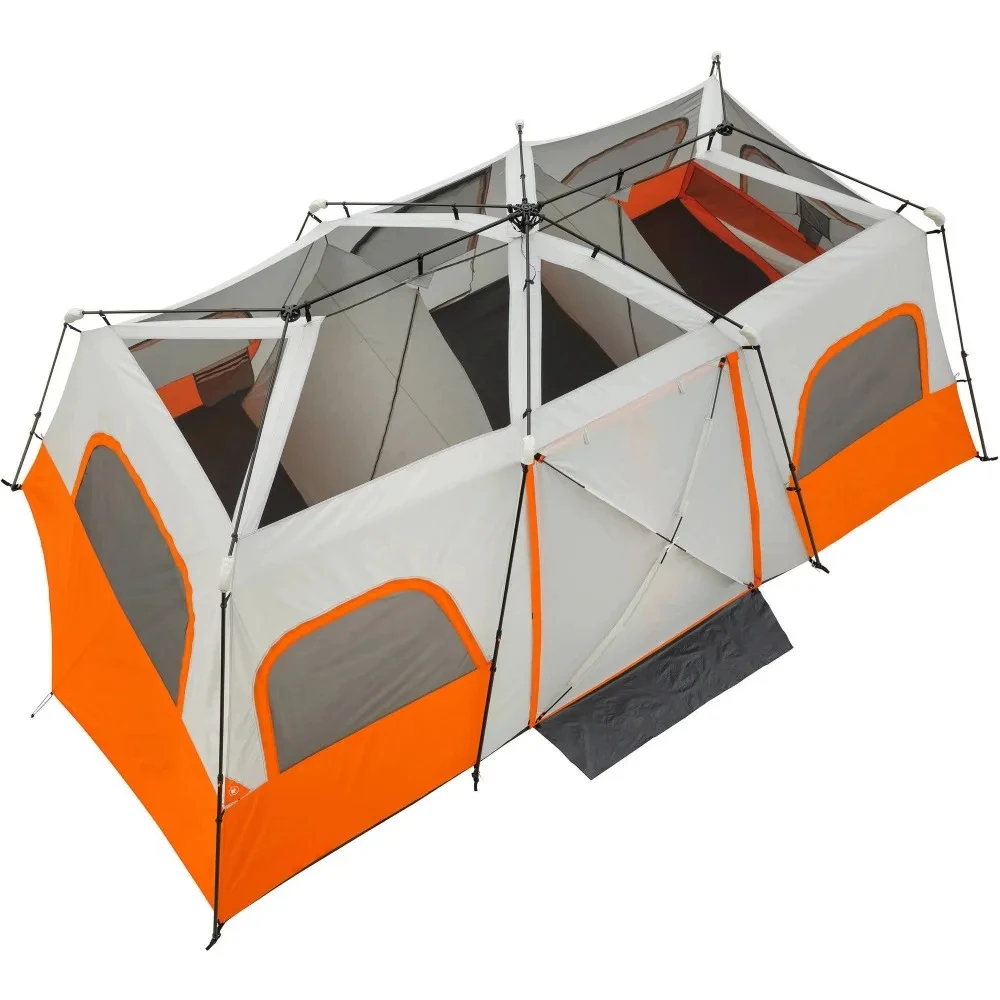
Understanding what size tent is good for 2 people helps prevent the disappointment of feeling cramped on your camping trip. Many couples discover that standard sizing can be misleading, which is why it’s worth exploring whether a 2-person tent is actually big enough before making your purchase decision.
With proper sizing, you’ll have room not just for sleeping but for enjoying rainy days inside together without feeling confined.
Essential Features for Couples’ Comfort in Instant Tents
When two people share a tent, certain features become increasingly important for comfort and harmony. Here’s what couples should look for in an instant tent:
Enhanced Ventilation: Two bodies generate more heat and humidity than one, making proper airflow essential. Look for:
* Multiple mesh windows on opposite sides to create cross-ventilation
* Ground vents to eliminate cold, damp air
* Mesh ceiling panels for heat escape and stargazing on clear nights
Privacy Elements: Even in the wilderness, privacy matters:
* Window covers that can be adjusted from inside
* Room dividers in larger models for changing clothes
* Vestibules or covered entryways for storage space with privacy
Organizational Features: Keeping gear organized prevents conflicts in small spaces:
* Abundant interior pockets for personal items
* Gear lofts or hanging points for lights and essentials
* E-ports for running power if you’re at a campsite with electricity
Door Configuration: The right entrance design makes a big difference:
* Double doors allow each person to exit without disturbing the other
* Single large D-shaped doors provide easier access than small openings
* Vestibules over doorways keep rain out during entry and exit
Weather Protection: Keeping both of you dry and comfortable:
* Full-coverage rainfly that extends past doorways
* Bathtub floor construction with sealed seams
* Adequate guy-out points for stabilization in windy conditions
Many 2-person pop-up tents include these features, though quality varies significantly between brands. For camping in wet environments, look specifically for waterproof pop-up tent designs with higher hydrostatic head ratings—a measurement of how much water pressure the fabric can withstand before leaking.
The right combination of these features creates a comfortable shared space that enhances rather than detracts from your outdoor experience together.
The Couples’ Perspective: Advantages of Instant Tents for Shared Adventures
Couples who camp together face unique challenges that instant tents help address. The advantages extend far beyond mere convenience:
Reduced Setup Stress: Nothing strains a relationship quite like struggling to pitch a complicated tent at the end of a long day. Instant tents eliminate this common source of camping friction. With no complex pole assembly or confusing instructions, you avoid the “tent setup argument” that many camping couples know too well.
Quality Time Maximization: When your tent takes just a minute to set up, you gain valuable time for activities that matter—whether that’s hiking an additional mile, preparing a more elaborate meal together, or simply relaxing by the lake watching the sunset.
Experience Equalizer: Often in couples, one person has more outdoor experience than the other. Instant tents level the playing field, allowing the less experienced camper to handle setup with confidence. This builds camping competence and creates more equal participation in the adventure.
Flexibility in Timing: Late arrivals become less stressful when you know your shelter can be ready in minutes, even after dark. If unexpected weather rolls in, you can quickly secure your tent without getting soaked in the process.
Relationship Enhancer: Perhaps the most significant benefit is how instant tents contribute to a more harmonious camping experience. When basic needs like shelter are handled efficiently, you can focus on connecting with each other and with nature—the real reason you went camping in the first place.
The advantages of pop-up tents for two people extend beyond mere convenience to genuinely enhancing the quality of your shared outdoor experiences. Many couples find that upgrading to an instant tent transforms camping from a potentially stressful activity into a truly refreshing escape.
Considerations Before Purchase: Potential Limitations for Couples
While instant tents offer remarkable benefits, they come with trade-offs that couples should carefully consider before purchasing:
Bulk and Weight: The convenience of pre-attached poles comes at the cost of a larger packed size and heavier weight. Most instant tents for couples weigh between 10-20 pounds and don’t compress as small as traditional tents. This means:
* They require more trunk space in your vehicle
* They’re less suitable for backpacking or hike-in campsites
* You’ll need adequate storage space at home between trips
Weather Performance: Many (but not all) instant tents sacrifice some weather resilience:
* The integrated pole structure may be less stable in high winds
* Some models have fewer guy-out points for anchoring
* The complex joint mechanisms can be weak points in severe storms
Repair Challenges: When something does break, repairs can be more complicated:
* Integrated pole systems are harder to replace than separate components
* Specialized repair parts may not be readily available
* Professional repair may be necessary for mechanical components
Price Considerations: The convenience technology comes at a financial cost, with instant tents typically costing 20-30% more than traditional tents of comparable size and quality.
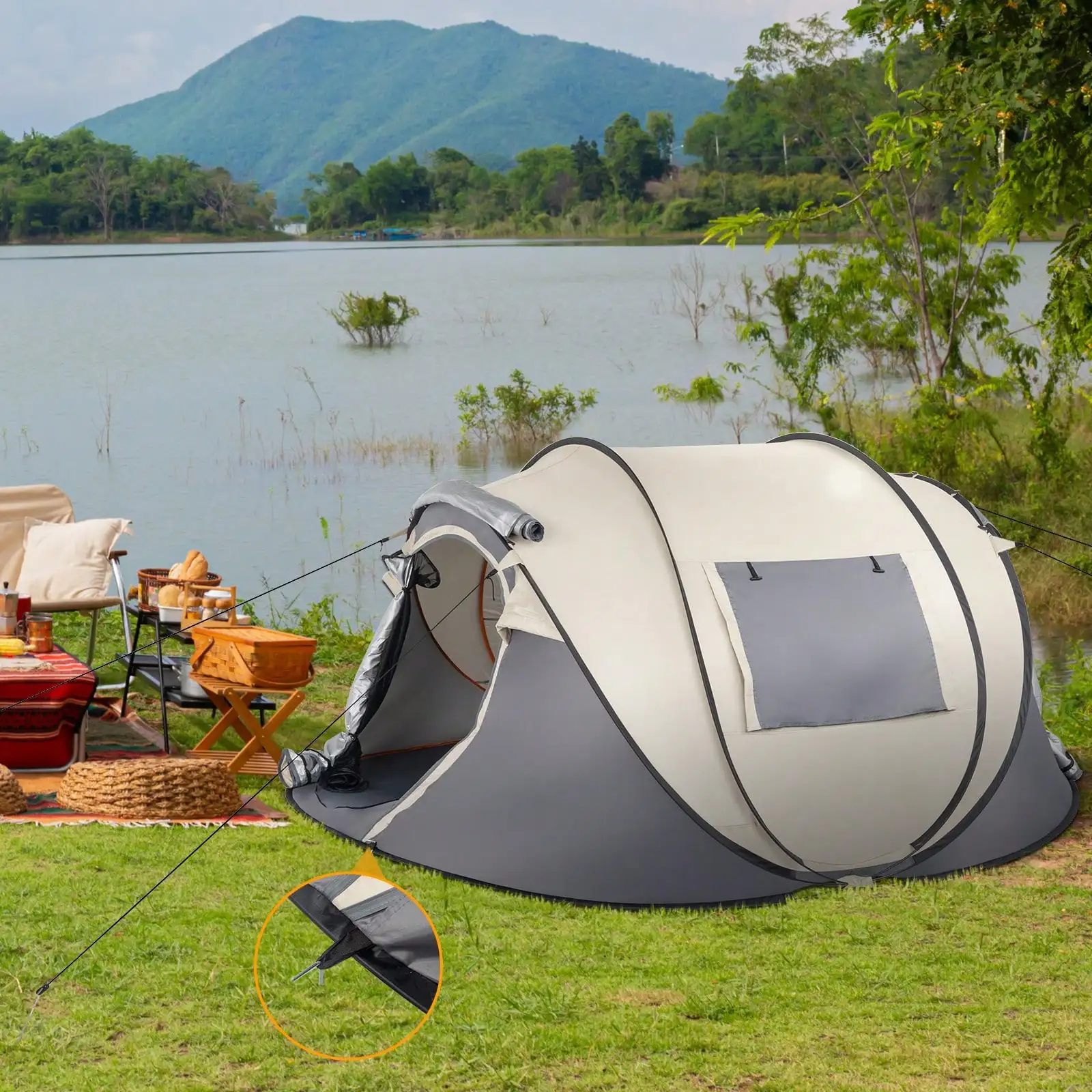
Durability Concerns: The additional moving parts may reduce longevity:
* Hinges and joints experience wear with repeated use
* Complex mechanisms have more potential failure points
* Some instant designs may be more difficult to dry thoroughly
The good news is that many easy setup camping tents have been engineered to address these issues, with manufacturers continually improving designs. By understanding these limitations upfront, couples can make an informed decision about whether the convenience justifies the compromises for their specific camping style.
Material Matters: Fabric and Construction Quality for Durability
For couples investing in an instant tent, material quality directly impacts long-term satisfaction. Understanding the key components helps you make a better choice:
Tent Fabric Fundamentals:
* Denier Rating: This number indicates fabric thickness—higher numbers mean stronger, more durable material. Look for at least 68D polyester for the main tent body and 150D+ for the floor.
* Waterproof Rating: Measured in millimeters (mm) of hydrostatic head, this indicates how much water pressure the fabric can withstand. Good tents start at 1500mm, with 3000mm+ providing excellent protection.
* UV Protection: Important for longevity, especially if you camp in sunny locations. Some fabrics include UV inhibitors that prevent degradation from sun exposure.
Pole Construction:
* Fiberglass: Common in budget models, these poles are lightweight but less durable and may splinter over time.
* Aluminum: Offers the best strength-to-weight ratio and longevity, though at a higher cost.
* Steel: Heaviest option, but provides maximum stability for larger instant cabin tents.
Critical Construction Points:
* Seams: Look for double-stitched, taped, or welded seams that prevent water intrusion.
* Stress Points: Reinforcements at corners and pole connection points distribute tension and prevent tears.
* Zippers: YKK or similar quality zippers with storm flaps prevent jamming and leaking.
Floor Durability: With two people constantly moving about, floor strength is essential:
* Bathtub-style floors that curve up the sides prevent water seepage
* Higher denier ratings (150D+) resist punctures from rocks and sticks
* Separate footprints (ground cloths) add significant protection and longevity
Understanding waterproof ratings for backpacking gear can help you interpret manufacturer specifications and determine whether a tent will meet your needs in various weather conditions.
Remember that with instant tents, the mechanical components require the same quality scrutiny as the fabrics—look for smooth operation, solid locking mechanisms, and corrosion-resistant materials in all moving parts.
Couples’ Buying Guide: How to Select Your Perfect Instant Tent
Finding the ideal instant tent for couples requires balancing several factors. Use this comprehensive checklist to guide your decision:
Size Considerations:
* Choose at least 3-person capacity for two adults with gear
* Verify internal dimensions can fit your preferred sleeping arrangement
* Check center height—cabin styles offer more headroom than dome designs
* Consider vestibule space for gear storage outside the main living area
Setup Mechanism:
* Test the ease of setup if possible before purchasing
* Verify that one person can handle the setup alone
* Look for straightforward locking mechanisms that won’t fail in the field
* Consider how intuitive the takedown process is—sometimes more challenging than setup
Livability Features:
* Two doors provide individual access without disturbing your partner
* Multiple windows enhance ventilation and reduce condensation
* Interior organization (pockets, loops, gear loft) keeps essentials accessible
* E-port access if you’ll be camping at sites with electricity
Weather Readiness:
* Full-coverage rainfly that can be removed in good weather
* Adequate guy-out points for stabilization in windy conditions
* Bathtub floor with waterproof coating and sealed seams
* Ventilation that works even with the rainfly installed
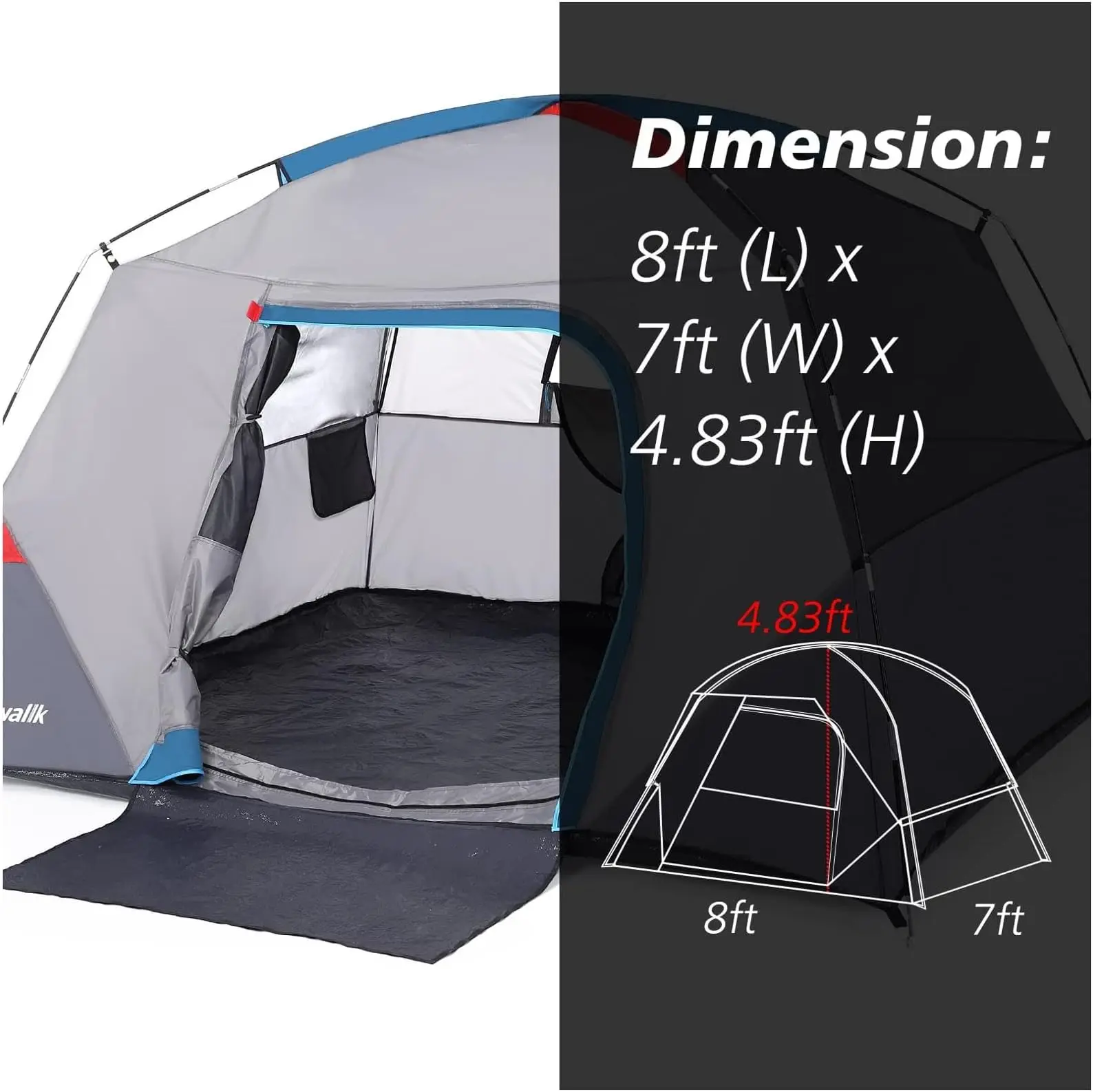
Portability vs. Comfort Trade-offs:
* Determine priority based on your typical camping style
* Consider packed size relative to your vehicle capacity
* Weigh setup convenience against weight if you’ll carry it any distance
* Balance luxury features against practical necessities
Budget Considerations:
* Invest in the best quality you can afford—this is your shelter
* Consider cost-per-use over the tent’s expected lifespan
* Determine which features justify premium pricing for your specific needs
* Look for durability features that will extend the tent’s useful life
Easy Setup Camping Tent, Instant Camping Tent
Instant Cabin Tent Double Layer Canvas 1-Minute Setup Spacious Family Camping Shelter with Air Vents$308.10 Select options This product has multiple variants. The options may be chosen on the product pagePop Up Dome Tent, Waterproof Pop Up Tent
$218.89 Select options This product has multiple variants. The options may be chosen on the product page- $633.01 Select options This product has multiple variants. The options may be chosen on the product page
Easy Setup Camping Tent, Trekking Pole Backpacking Tent
$142.40 Select options This product has multiple variants. The options may be chosen on the product pageEasy Setup Camping Tent, Waterproof Camping Tent
All-in-One Elevated 1-Person Camping Tent Cot with Integrated Sleeping System for Outdoor Adventures$535.16 Select options This product has multiple variants. The options may be chosen on the product page
Choosing the ultimate compact shelter for two involves understanding which features matter most for your specific camping style. For urban couples with limited storage space, evaluating space-saving tent options for two can help balance portability with comfort.
At Explore Elements, we’ve rigorously tested a range of instant tents to ensure they meet the needs of modern couples seeking both convenience and quality.
Extending Your Tent’s Life: Maintenance Tips for Couples’ Use
Proper maintenance significantly extends the life of your instant tent investment. Follow these couple-friendly care guidelines:
Regular Cleaning Routine:
* Sweep out dirt and debris after each use—sand and grit can damage zippers and abrade fabric
* Spot clean dirty areas with mild soap and warm water
* Pay special attention to door tracks and zipper teeth where grime accumulates
* Clean both partners’ sides equally to prevent uneven wear
Strategic Drying Process:
* Never pack away a damp tent—mildew forms quickly and permanently damages fabric
* Set up the tent at home after trips to ensure complete drying
* Open all doors and windows to maximize airflow
* Pay special attention to corners and seams where moisture hides
Mechanical Component Care:
* Gently clean dirt from pole mechanisms with a soft brush
* Apply silicone spray to moving parts when they become stiff
* Avoid forcing any mechanism that doesn’t move freely
* Check locking points for wear or damage after each trip
Storage Best Practices:
* Store loosely in a cool, dry place—not compressed in the original bag
* Keep away from direct sunlight and extreme temperatures
* Consider using a larger storage bag that reduces stress on fabrics and mechanisms
* Check periodically for pests or moisture issues
Partner Maintenance System:
* Divide cleaning tasks to make maintenance more manageable
* Create a checklist you both follow after each trip
* Assign specialized tasks based on skills (e.g., one handles mechanical checks, the other fabric care)
* Schedule a seasonal deep-clean and waterproofing treatment together
Different camping shelter options for two may require specific maintenance approaches, but all benefit from consistent care. Making tent maintenance a shared responsibility ensures your shelter stays in top condition for many adventures to come.
Is an Instant Tent Right for Your Relationship? Final Assessment
After examining all aspects of instant tents for couples, it’s time for a final assessment. The right choice ultimately depends on your relationship’s camping style and priorities.
Instant tents excel for couples who value simplicity and efficiency. If you frequently take weekend getaways, arrive at campsites after dark, or simply want to minimize setup hassle, the convenience of instant setup creates more quality time together. The reduced complexity also removes a common source of camping tension—figuring out complicated tent assembly when you’re tired, hungry, or racing approaching weather.
These tents particularly shine for newer campers or couples where one partner has less outdoor experience. The straightforward setup creates confidence and equal participation, enhancing the experience for both people.
However, couples who prioritize ultralight backpacking, extreme weather camping, or who have very limited storage space might find traditional tents better suited to their needs. The weight and bulk tradeoff becomes significant if you’re carrying your shelter long distances.
From a value perspective, consider how frequently you’ll use the tent. The higher initial investment in a quality instant tent often pays dividends in convenience and relationship harmony over many camping trips. For occasional campers, however, a traditional tent might offer better value.
Most couples find that the benefits of easy setup tents for weekend camping outweigh the drawbacks, especially as design improvements continue to address traditional limitations of instant models.
FAQ: Common Questions About Instant Tents for Couples
How long does it really take to set up an instant tent with two people?
With two people working together, most instant tents can be fully set up in 30-60 seconds. Even with just one person handling setup, most models take less than 2 minutes from unfolding to fully pitched—significantly faster than traditional tents.
Can instant tents handle heavy rain and strong winds?
Quality instant tents can handle moderate rain and winds up to about 30-40 mph, though performance varies by brand and model. Look for models with strong aluminum frames, adequate guy lines, and high waterproof ratings (3000mm+) for better weather resistance. However, in severe conditions, traditional geodesic designs generally offer better stability.
Is it possible for one person to set up a 4-person instant tent?
Yes, most 4-person instant tents are designed to be set up by a single person. The weight might make it slightly more challenging than smaller models, but the integrated pole structure means one person can handle the process without assistance.
How long will a good quality instant tent last with regular use?
With proper care and maintenance, premium instant tents typically last 3-5 years of regular use (10-20 trips per year). Budget models may show significant wear after just 1-2 seasons. The mechanical components tend to fail before the fabric, so look for models with strong, simple mechanisms and good warranty coverage.
Are there lightweight instant tents available for couples who hike to their campsite?
While instant tents are generally heavier than traditional backpacking tents, some manufacturers offer “quick pitch” hybrid designs weighing 4-7 pounds that combine some instant features with more packable designs. These offer a middle ground for couples who want faster setup but still need to carry their tent moderate distances.
For couples new to camping, stress-free tents with intuitive setup can make the difference between an occasional outing and a lifelong passion for outdoor adventure.

